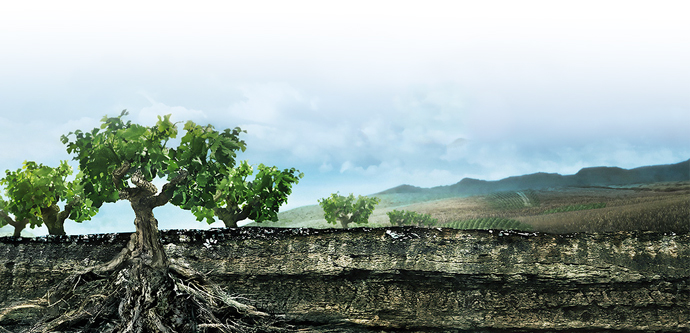[vimeo video_id=”33896811″ width=”690″ height=”388″ title=”No” byline=”No” portrait=”No” autoplay=”No” loop=”No” color=”ffffff”]
The Project’s Origin
Proyecto Garnachas de España pays homage to a varietal that was relegated to the background for some years and which current consumer trends have brought back to the limelight.
This collection of wines is the result of a very personal project by Raúl Acha, oenologist and technical director at Vintae, which was initiated with the search for vineyards in different areas of Spain that best reflected the essence of Garnacha. The result is a collection of single varietal wines from very old vineyards that capture the concept of ‘Terroir’ to perfection, as each wine expresses all the nuances and singularities typical of its winemaking area.
The wines produced for Proyecto Garnachas de España are made in areas near Valle del Ebro, which offers the optimum conditions required for Garnacha.
The Documentary
The documentary ‘Proyecto Garnachas de España’ is a journey through the history of Garnacha, the film’s main character, accompanied by the people who grow, study or make wine with it. This 45-minute documentary covers the trip carried out by Raúl Acha, a passionate advocate of the varietal, through the basin of River Ebro and the areas that have traditionally grown Garnacha: La Rioja, Navarra, Aragon and Catalonia.
The trip begins at the heart of the family Acha, where Raúl defends the value of the Garnacha vineyards that his great-grandfather planted in 1906 in his village, Cárdenas (La Rioja). The vines were about to be pulled up by his father to be replanted with other more productive varietals. Among Raúl’s family, a few believe that Garnacha will disappear because of the complications involved in its production and winemaking. Raúl, therefore, begins a search for areas with old Garnacha vineyards that experience similar issues, and in each of these areas (Calatayud, the Moncayo and the Priorat), he encounters various locals telling him about the history of Garnacha in their area and its evolution.
Following that road trip, Raúl Acha returns to La Rioja with his own project, a collection of wines made from each of the areas he visited on his search for old vines Garnacha. The collection also includes wines made in La Rioja with grapes from the old vines planted by his great-grandfather. The traditional way of harvesting, carried out by his family, is also shown in the documentary, and it ends with a very special tasting of the entire collection, in which we see if Raúl’s father – in favour of pulling up the vines – still has the same opinion.
Garnacha : A few facts
Garnacha is one of the varietals whose wines have been increasingly valued in the past few years. Consumers and critics alike are starting once again to value the fresh, fruity and easy-drinking wines that are produced from this varietal. However, Garnacha has not always enjoyed this recognition. For years, it has been relegated to the background and associated with low-quality wines.
The amount of hectares planted worldwide has also dropped; the 400,000 hectares registered just a few years ago have dropped to around 300,000.
Garnacha used to be the top red varietal in hectares planted in Spain for years. Up to the late 20th century, Garnacha covered between 100,000 and 120,000 hectares – it currently covers around 70,000 hectares. The amount of hectares planted worldwide has also dropped; the 400,000 hectares registered just a few years ago have dropped to around 300,000.
The Garnacha boom took place in the mid 19th century – around 1850 – when Oidium started to appear in the vineyards, a vine disease Garnacha proved to endure much better than other varietals; as a result, it was widely planted. Throughout the 20th century, Châteauneuf-du-Pape and La Rioja were the areas growing the best quality Garnacha which produced highly renowned wines.
Following the boom, in the late 20th century, there was a decline that associated Garnacha with low quality wines for years. Excessive coulure (a reaction to weather conditions that causes a failure of grapes to develop after flowering) brought the elaboration of clones to counteract its effects, which resulted in higher yields. It is precisely in those conditions that Garnacha produced its worst results. Therefore, it began to be associated with lighter coloured wines that was grown for bulk and rosé production.
In the past few years, Garnacha has slowly started to recover its prestige as a result of wines made from old vineyards producing low yields. “When yield is controlled, balanced wines with good longevity and great finesse are produced”, says Raúl Acha, who convinced by this statement put together the collection Proyecto Garnachas de España with the purpose of showing the different characteristics of this varietal from different winemaking areas.
Click here to find out more about La Garnacha Salvaje del Moncayo in British Columbia or click here for Alberta


